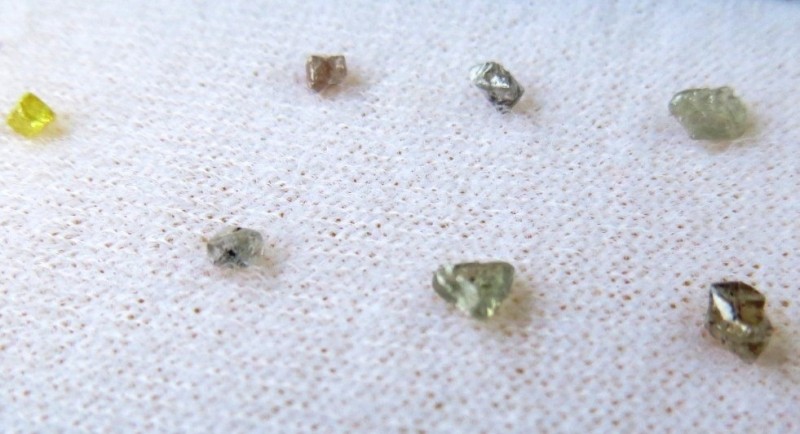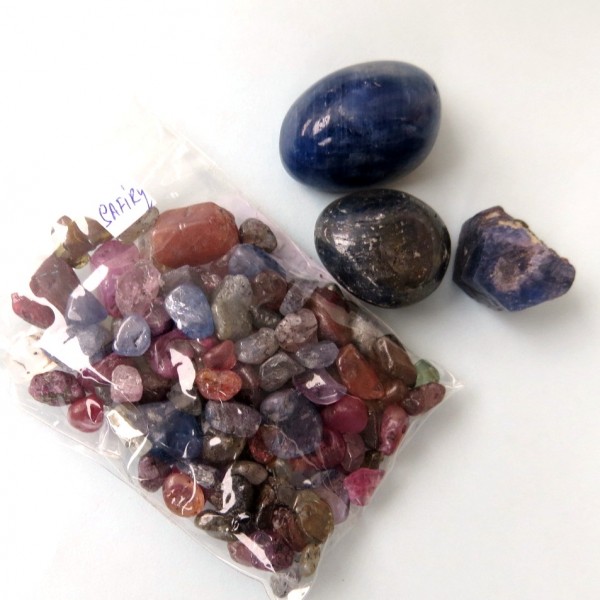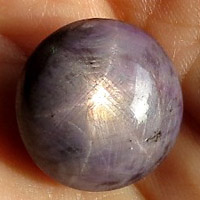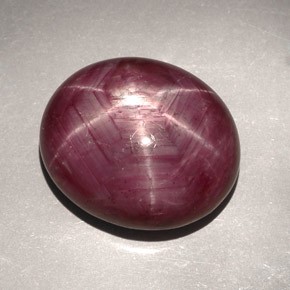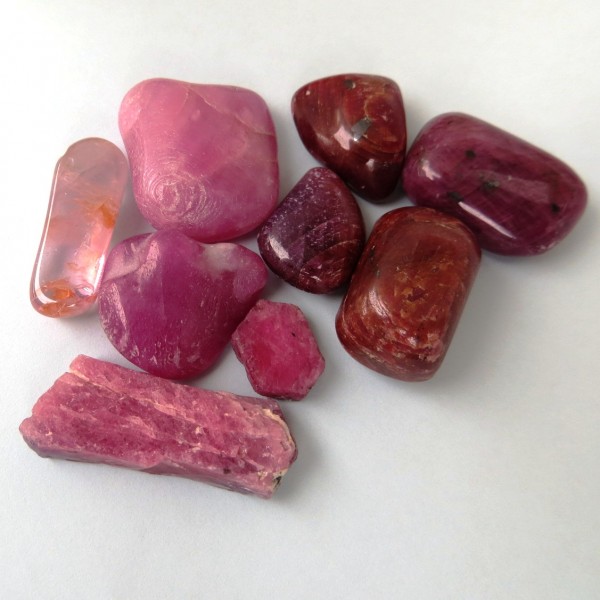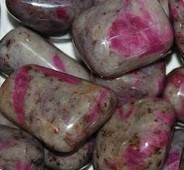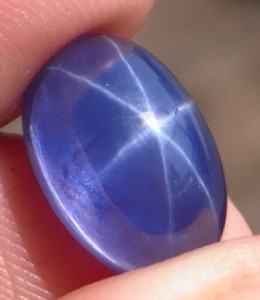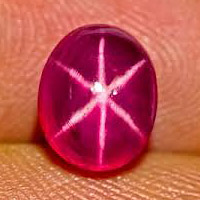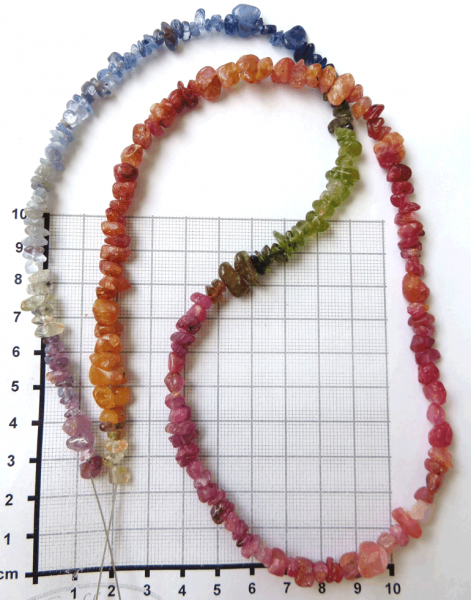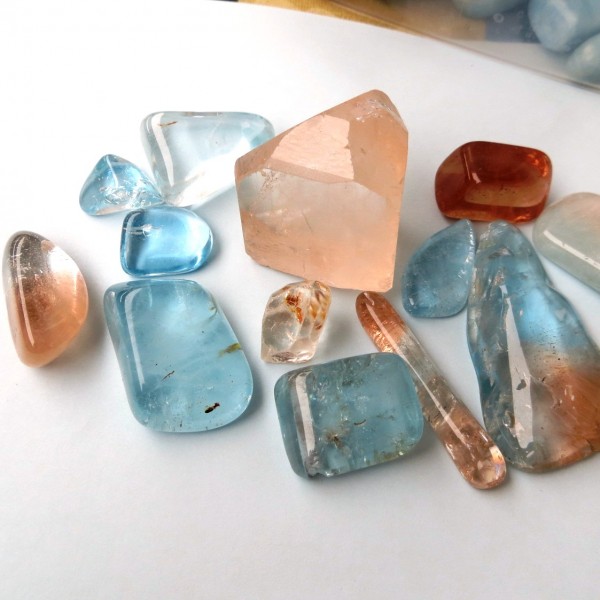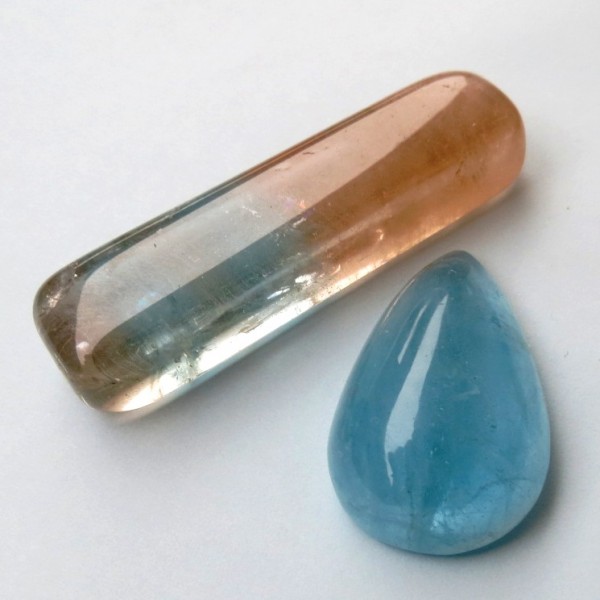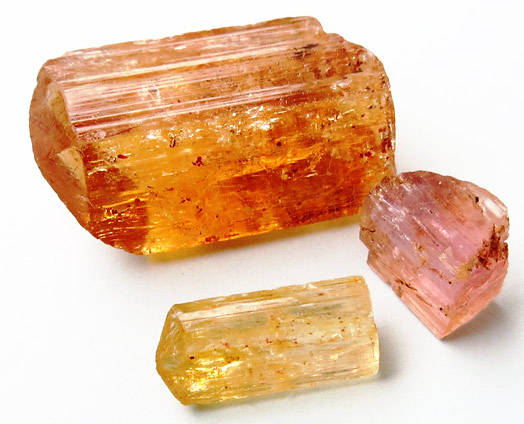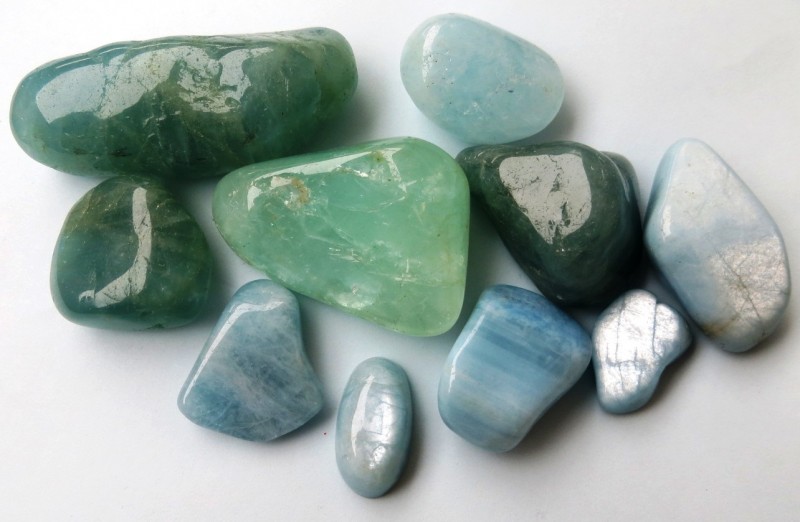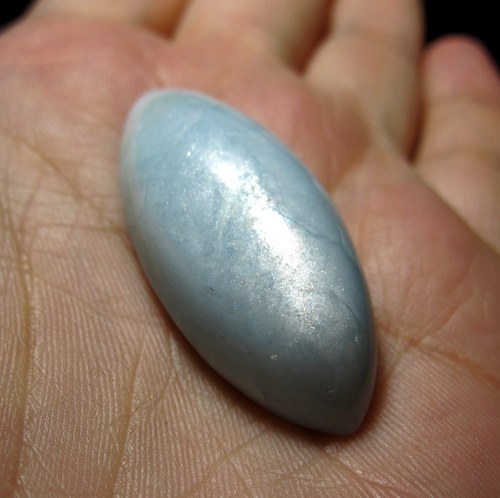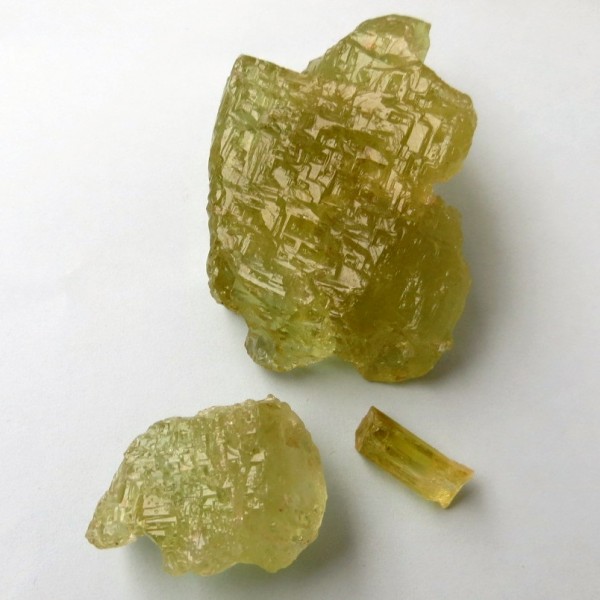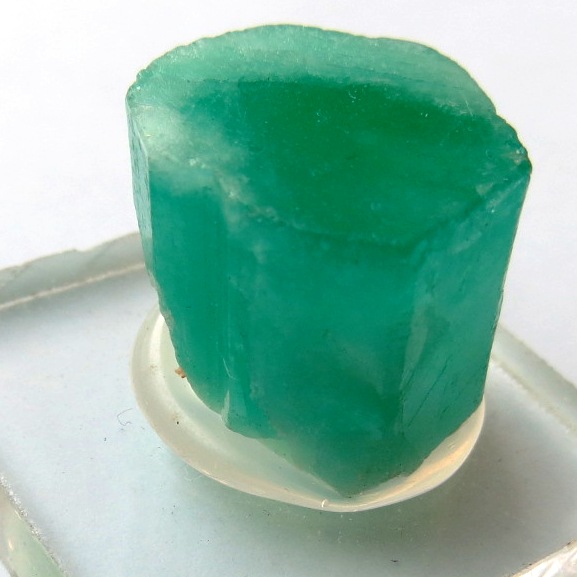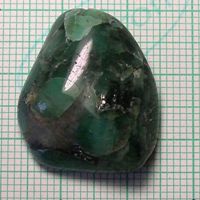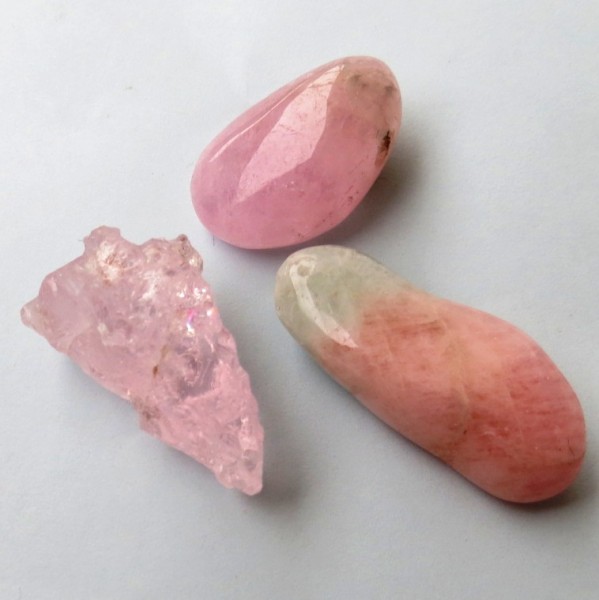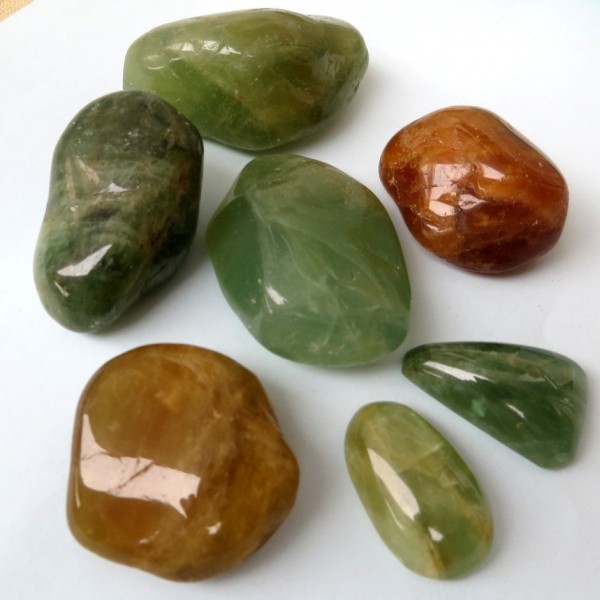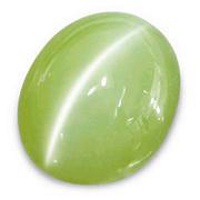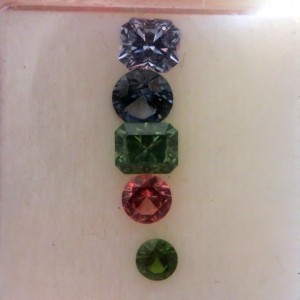Present Jewelry Stones - Part 1 (Diamond, Sapphire, Ruby, Topaz, Beryl, Aquamarine, Heliodor, Chrys
Introduction
(Pavla and Jan Čepelíkov, 21.1.2013)
In this irregular series, we would like to introduce you to today's jewelery stones.
In today's, almost enlightened times, the use of stones has changed a lot, bringing a lot of beauty, innovation in their use, and lots of new jewelry techniques that occasionally bring mischief, mostly because of ignorance.
To enjoy the beauty and avoid mischief, we need to know a little about stones. In fact, since literature for new jewelery industries does not exist, we have started to do courses on this subject, and now we will try to summarize the most important pieces of information in a flint series. In times not so old that many remember, there were basically two industries, precious metal jewelry or jewelery combined with glass and plastic. From this time on, there is now an incorrect division of stones into precious and semi-precious stones (although nobody knew exactly what the semi-precious stones are). The word semiprecious is no longer used officially.
The biggest change is that during the last 30 years, this “manufacturing” industry has been merrily mixed. (hooray… oujééé)… and you can easily buy a luxury jewel of 18k gold with glass and resin or even a piece of Elvis's car, and a beautiful aquamarine embedded in tin or galvanized, or a diamond embedded in noble plastic… just today Everything is possible, so it has been forgotten that some stones are not suitable for a certain type of jewelry or even for any jewelry because of their low resistance or very high toxicity. Even in the Czech Republic, it is necessary to buy cabochon from a handsome yellow-orange auripigment, which is extremely toxic, full of arsenic and mercury, and certainly should not be worn on the body or recommended to showcases in the bedroom or children's room. Likewise, feathery selenite (gypsum) will not last almost nothing and although it is nice as a jewelry stone is totally unsuitable ... and there are many examples of this, and we will pay attention to them in the series. Links in the text are links to the given stone in our e-shop.
But in the first part (s) we would like to devote our time to precious stones, because their tradition is long and the beauty is immeasurable.
Precious stones
The definitions are a bit boring - so, say, a "gem" is a rock that is tough, beautiful, and quite rare in good quality. Furtherit has a "precious" quality (ie it is usually clear, transparent and little hilarious).
Of course, the price of gems is taller than high, but the price range is considerable and sometimes seemingly incomprehensible. Fortunately, gemstones have a fairly clear terminology, so there is no such "business hockey" as in other minerals.
It is certainly worth mentioning how the price is actually set for stones.
The quality of the stone has its main share: nice or rare color, quality of cut, transparency, cassettes, fashionability, and possibly rare inclusions, and accessibility is of great importance.
Some stones are so rare that even if they are not super beautiful their cost is astronomical.
In the Czech Republic, the awareness of the price of gems has disappeared completely during socialism. And unfortunately, in the new fashionable stone literature, gems and more ordinary stones are photographed side by side as bread rolls without mentioning it. (for example, one hundred thousand crowns and a red one for thirty crowns). Which of course contributes to further confusion. People are often disappointed with the ruby look at the mineral exchanges, which they can buy for 150 crowns, which have decided to invest in a stone for joy, and the requirements for hundreds of thousands of chrysoberyl (which was on the side next to common chalcedony) are also commonplace.
Also, the stones from extinct sites and the complete innovations that only one trader has a monopoly are significantly more expensive.
For some stones, there is only one site (mine) where it is mined (eg sugilit, ametrin, tanzanite, amethyst stalactites, etc.).
Of course, the size (weight) plays an essential role in the price, the higher the carat price is, because only a small percentage of gems is not a small flea, so 2 cm stone can cost 100 times as much as a carat than 0 5cm.
So much about gem prices and now let's go to them.
Diamonds
The most famous, hardest, but surprisingly, not necessarily the most expensive stones are dimanats (we don't really use them in tinning, stitching or wiring. They have their own diamond classification, and the price is always given per carat (ct = 0.2 grams).
The raw ones are most often octahedron, special to soap shine, and for a long time, the beaters are very fashionable.
Recently, so-called wastes, ie unsuitable diamonds, have been drilling in India and threaded onto them.beautiful very shimmering laces.
A rare natural colored diamond is called Fancy Diamonds. The most expensive is blue and pink.
Recently, irradiated colored diamonds, red, blue, green in color, made of yellow and brown natural diamonds have appeared. The color is stable and produces affordable color diamonds. Increasingly, mostly mostly half-carat synthetic diamonds began to appear, wearing a laser-burned description that they are synthetic. Diamonds are also treated with a special process called High Pressure High Temperature Treatment (HPHT), which makes brown diamonds pure colorless diamonds. On such diamonds, HPHT PROCESSED, “IRRADIATED,” or “GE POL” and a registration number are burned by a laser. In Israel, it often cleans diamond defects by firing them with a laser, dissolving the caries chemically, and then filling the bore with high-grade glass. Such diamonds should have it in the description and are about 1/3 cheaper.
There is no point in dealing with diamonds in detail, much has been said about diamonds elsewhere, and their sales have strict rules and you really have to consult a specialist.
Corundum (sapphire, ruby)
Another group, and that is already more interesting for "home" production, is the corundum - the royal stones.
These include Sapphires and Rubies . It is only possible to discern a ruby from red sapphire by spectrographic analysis for the presence of chromium and then by a locality known to be ruby. Otherwise they are indistinguishable.
Usually, for those “non-precious corundum” everythingwhat is red and pink sold as ruby, and other colors like sapphire.
Sapphire can be of any color. The rarest color is the pink-orange padparadja, the pink-violet and purple-purple, and the most popular is the classic sapphire blue.
In ordinary goldsmithing, but the real untreated larger corundum you will not meet much, rather at Cartier, who is oriented on very wealthy clients.
Mostly synthetic corundum has been used for over 150 years. Therefore, if you have a beautiful roaring red to red-pink centimeter ruby in the ring after your (let's say not just a millionaire grandmother), believe that it will be more synthetic (this can differentiate for a fee gemological laboratory, if you want to be sure).
Most sapphires, after harvesting, are treated with firing and other treatments, for better color, but the layman does not know the knowledge and microscope, but the price can tell (of course, only with solid merchants).
Burnt clear blue sapphire and unburnt look the same at first glance, but a centimeter burnt can cost, for example, 14.000, - CZK and 70.000, - CZK.
And because rubies and sapphires also appear in non-gemstone quality (usually they are no longer transparent at all), we have beautiful material for those who don't use gold, platinum and often silver at the jewelery production.
Such corundums are commonly available, and they are so beautiful jewelry stones. Their hardness is huge, and even the daily wear does not leave any marks in them as scratches.
Corundum does not lose its shine, they do not mind acids or soaking in water, they will survive the sea. However, they can react to thermal shocks in tinning, but it is not a common thing (they can do all the stones).
Beautiful variation is corundum asteric ie. having an optical effect of six-pointed stars on the surface. It is seen in the sun or under the spotlight, and it is formed by microwells in the stone oriented in three directions. Therefore, even the purest asteric stones have at least a milky touch. Be careful when shooting on multiple bulbs, you will see a few distinct stars, and the effect will disappear. The best is the sun or one spot bulb. Sometimes the star can be twelve-pointed. Asteric rubies and sapphires are also produced synthetically.
Sapphires are today imported into the Czech Republic from Ceylon, India, Thailand, Madagascar, Tanzania and Australia. Rubies are driven mainly fromTanzania, India, Burma (Myamaru) and Vietnam. There is also one marble quarry in Macedonia, Europe, which provides beautifully colored but opaque rubies.
The most common and very affordable are Indian rubies and sapphires, which are still very nice, although they are not considered to be of high quality.
You can meet with pinecones, sometimes polished on one side, or with finished cabochons. Beautiful is also the combination of Ruby in fuchsite (India), or Ruby in Zoisite Tanzania (the zoisite form has black dots and has no white trim around ruby grains).
Another effect (we call him piggy bank) is called Schiller and is not only very common on corundum.
Corundum is a very strong stone, and its effects are almost "surgical". Therefore, they are not of a weak nature, but have always been worn by leaders.
ruby in fuchsite (India) - left and ruby in zoisite (Tanzania) - right
sapphire beads (Tanzania Umba), ruby (Tanzania Morogoro), and calf tourmalines (Tanzania)
Topazy
Topaz , and here it is simple, all are called topaz (hooray) regardless of color. They tend to be clear, white, blue, brown, brown-pink or gold-plated to gold.
The last two named colors will be known as Imperial Topaz. Topazs much reflect light, far more than quartz, and therefore tumbled literally shines. Deep blue-blue, sometimes poisonous blue topazes are usually originally clear pieces irradiated in an atomic reactor. Part of the topaz imperial gets its orange color after burning. Natural stones tend to have colors much softer, and overall you will feel better. Non-irradiated topazes also have color gradations (two-color and three-color). They are very hard, they can resist the brewing acid again, and silver and white gold are most suited for their radiance. If you take crystal and a clear topaz of similar size, you will be surprised that topaz is clearly heavier, noticeably cooler and more glittering (as if shining white). Just be careful about the falls, because they are quite fissile, and whenthe impact on the hard floor can easily spread.
Today, Topaz is mined mainly in Nigeria, Brazil, Russia, Pakistan and Ukraine.
Topaz is a stone very closely connected with the head, with sharp judgment and thought. Helps focus thinking, word words (blue version) and being vigilant.
Beryls (aquamarine, heliodor, beryl, emerald, morganite and goshenite)
Beryls, our darlings - these include aquamarines, emeralds, heliodors, morganites, goshenites and just beryls. They have a beautiful crystal shape of the hexagonal prism, and are often worn in the rough. It belongs to the favorite and velicke beautiful stones since ancient times.
These gemstones are among those that fortunately a common mortal will achieve even in very good quality (and may not sell a house, flat or car at once). It is exploited in many places, from Africa, Afghanistan, India, Pakistani, through Brazil to Russia.
Of course, they also have different qualities, and you can again meet both the perfect clear pieces and the pale and cracked.
As with corundum, you don't have to worry about wearing all day long, do not wear off, and brazing acid and high temperature don't bother them.
Aquamarine is the most popular light blue to blue-green variant of beryl, the bluer and more transparent, the better, valuable are also stones with Schiler effect or cat eye effect (such a shining moving line on the stone). Recently, Afghans and Pakistani began to color aquamarine crystals with plain color to make themricher shade, which is not permanent. The color is only caught on the white coatings on the stone and into the hairline cracks. When such a stone is ground, it is light.
Aquamarines belong to the cervical chakra, thus improving mainly communication and truthfulness to themselves, and it is a stone suitable for travel.
Heliodor - is a yellow or yellow-green form, and is much rarer than aquamarine. Famous were the shiny natural etched Heliodors from Volyně, from the now defunct site. Today you can see heliodor crystals mainly from Tajikistan and Brazil.
Heliodor belongs to the solar plexus chakra and helps to find the self, its inner sun. It also helps with digestion, gallbladder and all around the stomach.
Everyone knows emeralds, it is simply emerald :-) green form of beryl, and it is one of the most valuable ones, because quality emeralds are quite few. Emerald is defined as chromium-containing beryl. To us, opaque bright, not very rich, colored emeralds from Brazil and China are imported to the rock at favorable prices (such as plain jasper), and besides them, clear, deep green crystals from Colombia are suitable for ringing at astronomical prices. Unfortunately, nothing in the meantime is present in the current market.
Emerald belongs to the heart chakra, it is a very strong stone, the greener the better. They teach us to stand by you,say no and protect yourself without it being at the expense of others.
They also belong to the royal stones, especially the Maharajas and the Turkish sultans, who liked it.
You can see emeralds in our offer here .

Emerald Russia - Ural
The clear variant of beryl is called Goshenit.
Morganit - pink form of beryl (salmon or baby pink) is not very well known in our country, it is also rarer, but it is definitely amazing, if we meet it, we try to import at least a few pieces, or sharpen them. The main locations from which to drive are Brazil, Mozambique, Namibia, Zimbabwe and Pakistan.
Morganit is the second beryl heart chakra, and cares for self-love, kindness, and sensitivity. Morganit in combination with aquamarine is a stone that symbolizes Christ's colors.
Beryls , which cannot be included in any of the above groups, are simply called beryls.
In particular, emerald is commonly produced from beryllium. They are in stores so-called synthetic aquamarines, but it is a synthetic blue spinel with the same color. “Synthetic aquamarine (spinel)” is a much-used blue stone in goldsmiths today, with tons of glitter on you.
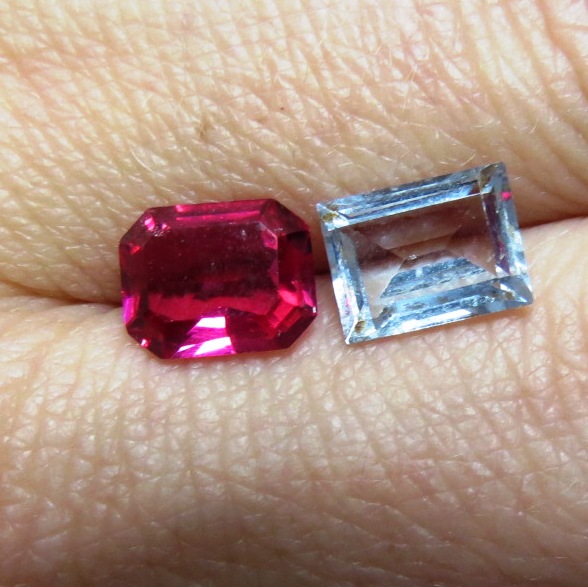
synthetic ruby and synthetic blue spinel (called synthetic aquamarine), the most widely used gold synthetic, except cubic zirconia
Chrysoberyl (chrysoberyl, alexandrite, cymophane, cat eye)
Chrysoberyls with their special varieties alexandrite and chrysoberyl cat eye, called cymophane, are also among the gems. Chrysoberyl is a hardness stone between sapphire and beryl, green, brown, gray, orange or bright yellow.
Alexandrite is its green variety, which has an artificial light purple color. (this effect is called colored, and other stones have it)
Perhaps the most valued are yellow chrysoberyl cat's eye and their price is equal to diamonds.
QUALITY BRUS verus, FISH OKO
We wanted to mention the quality of cut stones, mainly facet cuts. A well-ground stone reflects the maximum amount of light, and no pad is visible through it. If this is not the case, it will not be seen as a fish eye effect. It is quite common, and it is a great pity (the stone is also lost on the price).
poorly ground smoky quartz and amethyst (fish eyes)
————————————————————————————-
Next time: Jewelery Stones of the Present - Part 2
In this work we will learn two other groups of stones
Tourmalines
Grenades
Pavel and Jan Čepelíkov, 21.1. 2013

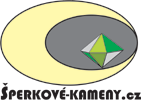

 (0) - 0,-
(0) - 0,-